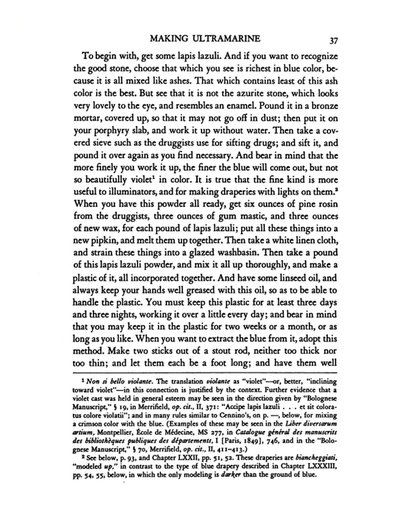The Secret of the Medieval Palette
The medieval artist would have ground and prepared his own pigments since ready-made paints were not available. Techniques were usually passed down from master to apprentice, though a few recipe-books, such as Cennino Cennini’s 15th century Il Libro dell’Arte revealed the secrets of preparing paints from pigments and dyes.
Such books also provided sophisticated guidelines for the use of each color based on factors such as its lightfastness, toxicity, reactivity and cost. For instance, orpiment—an arsenic-based pigment—was known to be toxic and best used alone. Solutions such as coating copper green with a resin to help stabilize it allowed difficult pigments to receive a transparent wash of another color, effectively mixing the colors while preventing chemical interactions.
Lapis lazuli was quite expensive to use both because of the scarcity of the mineral and because of the difficulty of its preparation. As Cennini details here, simple grinding produced a greyish blue so complicated preparations were needed in order to extract the vibrant ultramarine blue we are accustomed to in medieval art. The traditional use of lapis blue for the robes of the virgin Mary (who earlier had been shown in red) grew out of the value placed on this precious color.

